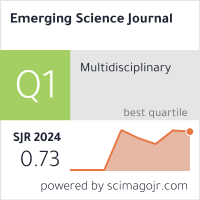Social Ostracism and Bullying Among Social Pedagogy and Pedagogy-Psychology Students
Downloads
This study examines the impact of social ostracism and bullying among students of social pedagogy, pedagogy, and psychology, while identifying differences in their coping strategies. Using a mixed-methods approach, 66 students (aged 17–22) were surveyed with the Need Threat Scale (NTS-O) to assess ostracism, the SACS questionnaire to analyze coping strategies, and vignettes to measure perceptions of social isolation. Results revealed that social pedagogy students exhibited higher self-esteem (p < 0.05), while psychology students reported greater existential meaningfulness (η² = 0.42). A significant positive correlation emerged between impulsivity and power/provocation clusters (r = 0.51), alongside a negative association between avoidance and self-esteem (r = -0.55). The study’s novelty lies in its cross-disciplinary comparison, uncovering profession-specific behavioral patterns: social pedagogues more frequently employed assertive strategies, whereas psychology students relied on cautious actions (χ² = 9.87, p = 0.043). Based on factor analysis, preventive measures are proposed, including emotion-regulation training and anti-bullying programs tailored to digital risks (e.g., social media, cyber-ostracism). The research advances coping theory by highlighting how academic specialization shapes resilience to social isolation. Practical recommendations emphasize integrating interdisciplinary approaches into educational policies to foster inclusive environments.
Downloads
[1] Smith, M. M., Sherry, S. B., Vidovic, V., Saklofske, D. H., Stoeber, J., & Benoit, A. (2019). Perfectionism and the five-factor model of personality: A meta-analytic review. Personality and Social Psychology Review, 23(4), 367–390.
[2] Williams, K. D. (2009). Chapter 6 Ostracism. A Temporal Need-Threat Model. Advances in Experimental Social Psychology (Academic Press), 41, 275–314. doi:10.1016/S0065-2601(08)00406-1.
[3] Juvonen, J., & Graham, S. (2014). Bullying in schools: The power of bullies and the plight of victims. Annual Review of Psychology, 65(1), 159–185. doi:10.1146/annurev-psych-010213-115030.
[4] Tobin, S. J., Vanman, E. J., Verreynne, M., & Saeri, A. K. (2015). Threats to belonging on Facebook: lurking and ostracism. Social Influence, 10(1), 31–42. doi:10.1080/15534510.2014.893924.
[5] Tajfel, H., & Turner, J. C. (2019). The Social Identity Theory of Intergroup Behavior. Political Psychology, 276–293. doi:10.4324/9780203505984-16.
[6] Garbarino, J. (1980). The ecology of human development: Experiments by nature and design. Harvard University Press, 2, 433–438. doi:10.1016/0190-7409(80)90036-5.
[7] Baumeister, R. F., & Leary, M. R. (2017). The need to belong: Desire for interpersonal attachments as a fundamental human motivation. Interpersonal Development, 57-89. doi:10.4324/9781351153683-3.
[8] Lazarus, R. S., & Folkman, S. (1984). Stress, appraisal, and coping. Springer‑Verlag, New York, United States.
[9] Hobfoll, S. E. (1989). Conservation of Resources: A New Attempt at Conceptualizing Stress. American Psychologist, 44(3), 513–524. doi:10.1037/0003-066X.44.3.513.
[10] Mendelevich, V. D., Nichiporenko, N. P., & Mukhamadiyeva, G. F. (2019). Relationship of anticipatory abilities with the characteristics of formally logical intelligence in terms of psychic norm and pathology. Mental Health, 8, 50–59.
[11] Zmanovskaya, E. V., & Rybnikov, V. Y. (2011). Deviant behavior of individuals and a group (Monograph). Peter, St. Petersburg, Russia. (In Russian).
[12] Twenge, J. M., Ciarocco, N. J., Baumeister, R. F., DeWall, C. N., & Bartels, J. M. (2007). Social exclusion decreases prosocial behavior. Journal of Personality and Social Psychology, 92(1), 56–66. doi:10.1037/0022-3514.92.1.56.
[13] Cook, C. R., Williams, K. R., Guerra, N. G., Kim, T. E., & Sadek, S. (2010). Predictors of bullying and victimization in childhood and adolescence: A meta-analytic investigation. School Psychology Quarterly, 25(2), 65–83. doi:10.1037/a0020149.
[14] Howard, M. C., Cogswell, J. E., & Smith, M. B. (2020). The antecedents and outcomes of workplace ostracism: A meta-analysis. The Journal of Applied Psychology, 105(6), 577–596. doi:10.1037/apl0000453.
[15] Link, B. G., & Phelan, J. C. (2001). Conceptualizing stigma. Annual Review of Sociology, 27, 363–385. doi:10.1146/annurev.soc.27.1.363.
[16] Leary, M. R. (2005). Sociometer theory and the pursuit of relational value: Getting to the root of self-esteem. European Review of Social Psychology, 16(1), 75–111. doi:10.1080/10463280540000007.
[17] Eisenberger, N. I., Lieberman, M. D., & Williams, K. D. (2003). Does rejection hurt? An fMRI study of social exclusion. Science, 302(5643), 290–292. doi:10.1126/science.1089134.
[18] Boykina, E. E. (2023). Social Ostracism and minors’ antisocial behavior. Psychology and Law, 13(1), 119-134.
[19] Wesselmann, E. D., Bradley, E., Taggart, R. S., & Williams, K. D. (2023). Exploring social exclusion: Where we are and where We’re going. Social and Personality Psychology Compass, 17(1), 12714. doi:10.1111/spc3.12714.
[20] Van Beest, I., & Williams, K. D. (2006). When inclusion costs and ostracism pays, ostracism still hurts. Journal of personality and social psychology, 91(5), 918. doi:10.1037/0022-3514.91.5.918.
[21] Boykina, E. E., Chirkina, R. V., Chumachenko, D. V., Romanova, N. M., & Kiselev, K. A. (2024). Ostracism Threatened Needs Scale (Adolescent, Youth), OTNS-AY. Psychology and Law, 14(1), 53-71. doi:10.17759/psylaw.2024140104.
[22] Hobfoll, S. E., & Schröder, K. E. (2001). Distinguishing between passive and active prosocial coping: Bridging inner-city women's mental health and AIDS risk behavior. Journal of Social and Personal Relationships, 18(2), 201-217.
[23] Norkina, E. G. (2025). Bullying structure. In Features of bullying manifestation among university students, 122–148. Russian State Vocational Pedagogical University, Yekaterinburg, Russia.
[24] Hobfoll, S. E., Dunahoo, C. L., Monnier, J., Hulsizer, M., & Johnson, R. J. (1994). The Strategic Approach to Coping Scale (SACS): A multidimensional model of stress coping behavior. Anxiety, Stress & Coping, 6, 253–270.
[25] Baumeister, R. F., & Vohs, K. D. (2002). The pursuit of meaningfulness in life. Handbook of positive psychology, 1, 608-618. doi:10.1093/oso/9780195135336.003.0044.
[26] Zadro, L., Williams, K. D., & Richardson, R. (2004). How low can you go? Ostracism by a computer is sufficient to lower self-reported levels of belonging, control, self-esteem, and meaningful existence. Journal of Experimental Social Psychology, 40(4), 560–567. doi:10.1016/j.jesp.2003.11.006.
[27] Roland, E., Bru, E., Midthassel, U. V., & Vaaland, G. S. (2010). The Zero programme against bullying: Effects of the programme in the context of the Norwegian manifesto against bullying. Social Psychology of Education, 13, 41-55. doi:10.1007/s11218-009-9096-0.
[28] Aylett, R., Vala, M., Sequeira, P., & Paiva, A. (2007). Fearnot!–an emergent narrative approach to virtual dramas for anti-bullying education. In Virtual Storytelling. Using Virtual Reality Technologies for Storytelling: 4th International Conference, ICVS 2007, Saint-Malo, France, December 5-7, 2007. Proceedings 4, 202-205.
[29] Glazman, O. L. (2019). Psychological characteristics of bullying participants. M. Proceedings of the Russian State Pedagogical University named after AI Herzen, (105), 159-165.
[30] Anderson, C. A., & Bushman, B. J. (2002). Human aggression. Annual Review of Psychology, 53, 27–51. doi:10.1146/annurev.psych.53.100901.135231.
[31] Crick, N. R., & Dodge, K. A. (1994). A review and reformulation of social information-processing mechanisms in children’s social adjustment. Psychological Bulletin, 115(1), 74–101. doi:10.1037/0033-2909.115.1.74.
[32] Hawley, P. H. (2003). Strategies of control, aggression, and morality in preschoolers: An evolutionary perspective. Journal of experimental child psychology, 85(3), 213-235.
[33] Sutton, J., Smith, P. K., & Swettenham, J. (1999). Social cognition and bullying: Social inadequacy or skilled manipulation? British Journal of Developmental Psychology, 17(3), 435–450. doi:10.1348/026151099165384.
[34] Ng, E. (2022). Cancel culture: A critical analysis. Palgrave Macmillan, London, United Kingdom.
[35] Arsenio, W. F., & Lemerise, E. A. (2001). Varieties of childhood bullying: Values, emotion processes, and social competence. Social Development, 10(1), 59–73. doi:10.1111/1467-9507.00148.
- This work (including HTML and PDF Files) is licensed under a Creative Commons Attribution 4.0 International License.




















